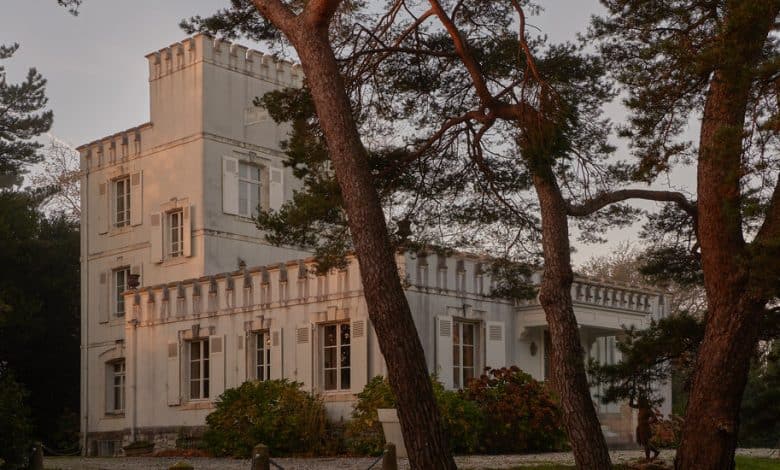A French Castle Filled With a Collector’s Treasures

When the French gallerist Yves Gastou bought the Ermitage de Douce-amie — or refuge of a sweet friend — a follylike crenelated castle on the outskirts of Biarritz in southwest France, in 1990, it had the air of a place frozen in time. Hidden within a forest of bamboo and pine, bay and oak trees, the 5,380-square-foot housewasbuilt in 1900 as a retirement home for a member of the imperial court of Napoleon III, or so Gastou believed. The house had changed hands only a few times since: The woman from whom he purchased it was among the last ladies in Biarritz to travel by horse and cart.
For Gastou, a decorative art and antiques dealer who died in 2020 at age 72, the house, with its faded pale blue cement facade and roughly 40-foot-tall turret, fulfilled romantic fantasies of knights and fortified towers that had taken root during childhood trips to Carcassonne; he grew up near that medieval walled city in Limoux. As an adult, he lived for most of the year in an apartment on the Quai Malaquais on Paris’s left bank that was a short walk from the namesake gallery he ran from 1986 until his death. The hermitage was his summer hideaway, a place for monthslong vacations with family and friends. And if his Paris home was an expression of his appetite for modernity — it epitomized his eclectic tastes, with Cubist midcentury furniture by the French sculptor Philippe Hiquily and acrylic 1980s-era pieces by the Japanese designer Shiro Kuramata — the castle offered a retreat into the past.
Over the decades, Gastou gradually restored the building, referring often to the architect’s plans and a 1930s painting of the home’s exterior that he discovered on the property. Working without a decorator, he hoped to keep the house as true to its origins as possible, while also using it as a repository for his many wide-ranging collections. Besides transforming the adjacent stables into a four-bedroom guesthouse and installing a lappool on the sloping two-acre grounds, his main concession to modernity was upgrading the kitchen, which sits at the rear of the house on the first floor, beside the dining room — and adding a bathroom on each of the four floors.
Most striking among these is the basement bathroom, whose floors and walls are entirely clad in white-and-green veined Vert d’Estours marble and white-flecked deep-gray Saint Anne des Pyrenees marble in an ode to Villa Kerylos, the famous turn-of-the-20th-century ancient Greek revival-style mansion on the French Riviera. Guests returning from the beach, a 25-minute walk from Gastou’s home,and wanting to freshen up would be greeted by a large bronze statue of Apollo, perched on a pedestal in a corner and modeled after a Roman version at the British Museum. It was juxtaposed with a blocky marble and terrazzo chair by the 1980s-era Memphis Group designer Ettore Sottsass, who oversaw the design ofGastou’s gallery and whose radical,irreverentwork the dealer affectionately likened to a punch in the face.
Gastou liked to express his love of the past, in part, by enlivening it with the shock of the new. A 1960slife-sizemirroredfigure by the Italian artist Claudio Platania and the French fashion designerPierre Cardin stood on one of the home’s landings, reflecting the angular carvings of the original pine banisters. In the garden, a 1990s galvanized steel winged bench by the British designer Tom Dixon contrasted starkly with the classical silhouettes of the pair of stone urns that flanked the pool.
